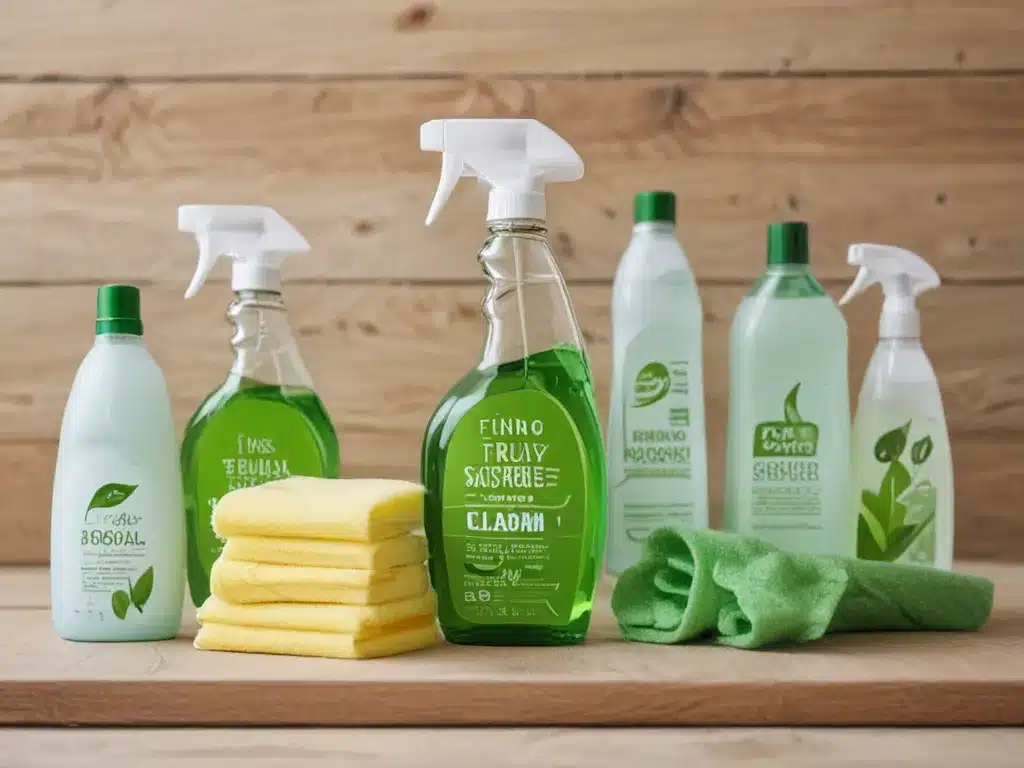Introduction
Going green with your cleaning products is an excellent way to reduce your environmental impact. However, with the rise of “greenwashing”, it can be tricky to find cleaning products that are truly sustainable. As a conscientious consumer, I want to make sure my dollars support companies that are ethical, eco-friendly, and transparency with their practices. This article will provide tips on how to identify authentically green cleaning brands so you can shop confidently.
Check Certifications and Validations
When evaluating cleaning products, look for third-party certifications that validate the brand’s environmental claims. Here are some of the major ones to look out for:
-
EPA Safer Choice – This label indicates the product uses safer chemicals and avoids ingredients with concerning health impacts. Safer Choice-certified products must disclose all ingredients.
-
USDA Certified Biobased – This means the product contains a high percentage of biobased (plant-based) ingredients. The higher the percentage, the better.
-
Green Seal – Green Seal sets sustainability standards for products and certifies those that meet criteria. Their certification is highly respected.
-
ECOLOGO – This certification indicates a product has undergone scientific testing to prove its environmental claims and meets a set of standards for sustainability.
-
NSF Contains Active Ingredients – This shows that a product contains active ingredients that are environmentally friendly.
Analyze Ingredients Lists
Flip that bottle around and read the ingredients list closely. Here are some things to look out for:
-
Plant-derived ingredients – Look for plant-based ingredients like citric acid, coconut oil, and essential oils. Avoid petroleum-based chemicals.
-
Fragrance – Steer clear of “fragrance” or “parfum” as this term can hide hundreds of undisclosed chemicals, including phthalates and allergens. Seek out fragrance-free options.
-
Ethically sourced palm oil – Many conventional cleaning products use palm oil that is often harvested through deforestation. Opt for brands that use RSPO-certified sustainable palm oil.
-
Biodegradable surfactants – Surfactants help lift away grease and dirt. Make sure they are plant-based and biodegradable (like coco glucoside).
-
Minimal preservatives – Preservatives elongate shelf life but some are toxic. Opt for minimal, safe preservatives like potassium sorbate.
Support Transparent Companies
Choose cleaning brands that believe in transparency by disclosing their full ingredients lists, responsible sourcing policies, and sustainability practices. Here are some green flags:
-
B Corp certified – B Corps meet rigorous standards for social and environmental impact. B Corp cleaning brands like Blueland and Seventh Generation publish annual assessments.
-
Climate neutral or negative – Eco-conscious companies like Cleancult invest in carbon offsets to negate their environmental footprint.
-
Responsible supply chains – Brands committed to sustainability screen their suppliers’ ethics and traceability. Pela offers full supply chain transparency.
-
Closed-loop systems – Innovative companies like Dropps use recyclable, refillable packaging to cut down on waste.
Conclusion
By scrutinizing certifications, analyzing ingredients, and supporting transparent brands, we can reward genuinely sustainable cleaning product companies. This lifts the standards for the entire industry. Our dollars make a difference, so let’s spend wisely and clean green.







